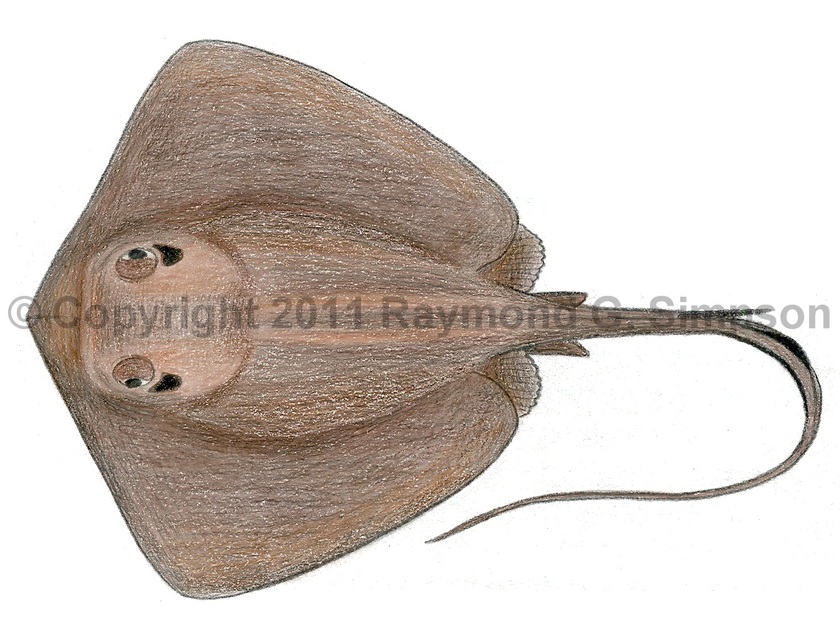
Common Name
Groovebelly Stingray
Year Described
Santos & Carvalho, 2004
Identification
A short-snouted species of Dasyatis with a broad rhomboidal disk. Eyes and spiracle large. A conspicuous W-shaped furrow on the ventral side below gill slits, centered on midline (unique in Atlantic Dasyatis). Tips of pectoral fins subangular (not rounded). Pre-orbital length greater than distance between the spiracles, with straight margins of snout. The dorsal surface is almost entirely devoid of denticles on the dorsal midline, tail, and scapular region (scattered denticles in only the largest specimens). Dorsal and ventral tailflaps about equal in size and well developed.
Color
Dorsal surface olive brown to medium brown. Underside pale. Tail darker, becoming black distally. Tailfolds black.
Size
Maximum size to 58cm DW.
Habitat
Shallow coastal waters and estuarine areas from 5-80m.
Range
Southwestern Atlantic: Bahia State, Brazil to Mar de Plata, Argentina.
References
Last, P. R., Naylor, G. J. P., & Manjaji-Matsumoto, B. M. 2016. A revised classification of the family Dasyatidae (Chondrichthyes: Myliobatiformes) based on new morphological and molecular insights. Zootaxa, 4139 (3): 345-368.
Santos, H.R.S. and M.R. de Carvalho. 2004. Description of a new species of whiptailed stingray from the southwestern Atlantic Ocean (Chondrichthyes, Myliobatiformes, Dasyatidae). Boletim do Museu Nacional do Rio de Janeiro, Nova Série. Zoologia No. 516: 1-24.
Other Notes
Records of Dasyatis pastinaca and D. say from the southwestern Atlantic probably refer to this species.
Retained in Dasyatis by Last et al. (2016) and characterized by the totally smooth dorsum.